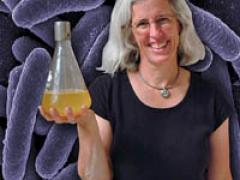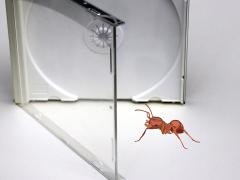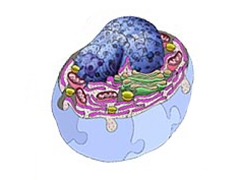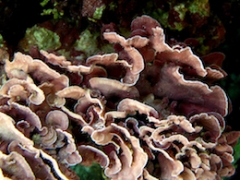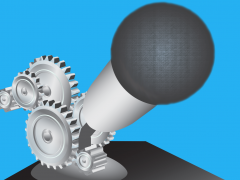Placebos (fake medicine) have been used for years in research to learn about the effects of medications, called drugs. Some patients experience a strange “placebo effect,” where fake drugs work just as well as the real stuff. Scientists are now figuring out a way to predict a patient’s response to drugs, and how the placebo effect can mess with actual drug effects.
- Home
- Activities
-
Stories
- World of Biology
- Meet Our Biologists
- Listen and Watch
- PLOSable Biology
-
Embryo Tales
- All About Autism
- Xs and Ys: How Our Sex Is Decided
- When Blood Types Shouldn’t Mix: Rh and Pregnancy
- What Is the Menstrual Cycle?
- Understanding Intersex
- Twin Tales
- The Mysterious Case of the Missing Periods
- Summarizing Sex Traits
- Shedding Light on Endometriosis
- Periods: What Should You Expect?
- Menstruation Matters
- Investigating In Vitro Fertilization
- Introducing the IUD
- How Fast Do Embryos Grow?
- Helpful Sex Hormones
- Getting to Know the Germ Layers
- Gender versus Biological Sex: What’s the Difference?
- Gender Identities and Expression
- Focusing on Female Infertility
- Fetal Alcohol Syndrome and Pregnancy
- Ectopic Pregnancy: An Unexpected Path
- Creating Chimeras
- Confronting Human Chimerism
- Cells, Frozen in Time
- EvMed Edits
- Stories in Other Languages
- Images
- Links
- Contact
- About
Biology Stories
Explore the world of biology and meet some of our biologists. Here you can learn about the living world and find out what is so cool about biology that someone would do it for a living. Pick a story to read or listen to one of our podcast shows filled with guest scientists who share their experiences and passion for discovery.
Whether coming up with new methods for microscopes, or finding out new things about photosynthesis, Petra Fromme loves the process of discovery.
Take a breath and breathe out. What you just exhaled is the subject of this podcast. It is a story of over 140 thousand molecules and what we are learning about them and what a single breath might tell us about our health. Dr. Biology catches up with bioanalytical chemist Heather Bean. The two explore the world of metabolomes and metabolites, what they are, how we use them today and the future for these molecules when it comes to diagnosing and treating diseases.
Pierre Deviche's love for the outdoors led him to doing field research on the timing of breeding in birds.
Microbes are everywhere, but what are they? We get the inside story from microbiologist Valerie Stout about these tiny life forms including a slimy and gooey material many microbes make called biofilms. In fact, you have a daily encounter with biofilms and bacteria that can impact your health.
Space travel and microscopic organisms. What interest are these two things to ASU School of Life Sciences Professor and Biodesign Institute researcher Cheryl Nickerson? Tune in to find out.
Building Your Own Ant Farm is a 2-part Ask A Biologist video with Dr. Biology and Rebecca Clark on how to build an ant farm with two recycled CD cases. Watch part two.
Building Your Own Ant Farm (Part 2 of 2). Ask A Biologist video with Dr. Biology and Rebecca Clark on how to build an ant farm with recycled CD cases. Watch part one.
Nicholas Stephanopoulos works with tiny structures so small you can only see them by using powerful microscopes. Some might say he's a builder, but he actually gets the molecules to do the building themselves.
Culture – it’s a word that we usually think of as connected with people. But many animals show signs of basic culture. Scientists are learning that even bumblebees possess the basic parts of culture too.
Biology, butterflies, and violin ballads are just a few of the things Dr. Biology talks about with ASU School of Life Sciences Professor Ron Rutowski.
Large cities are often hotter than their rural surroundings, so what does that mean for city animals? At least for ants, it looks like these city dwellers may be better prepared to take the heat.
Earth’s changing temperatures are affecting animals on land, but they are also affecting other areas. Dive into the marine world with us to explore the effects of rising temperature and ocean acidification on algae.
Nine months – that’s about the amount of time that healthy babies develop before they are born. But what if that nine months is a bit more flexible, and can change in response to the environment?
There are many types of relationships that exist in the living world. This episode dives into one special relationship that an insect has with some tiny microbes. It is a life and death story that microbiologist John McCutcheon has been exploring. Dr. Biology gets the inside story about this relationship that has been evolving for millions of years and continues to evolve today.
Cancer cells decide how to behave by “listening” to signals around them. Scientists recently studied these signals by watching cancer cells as the cells moved through their environment.
Have you ever wondered how complex science jargon is translated into a story that captivates and educates? We've got you covered! Dr. Biology chats with James Gorman, a veteran science reporter from the New York Times, we peel back the layers of science communication, revealing how to distill complex concepts into engaging narratives. Get ready to discover the tightrope walk between simplification and scientific accuracy—a balance crucial for sparking curiosity without sacrificing the research's core. The two also talk about the best way to evaluate the trustworthiness of a science story.
Podcasting is new to both Ask A Biologist and an exciting new science program called Science Studio. The host of this new show, Peggy Coulombe, talks with Dr. Biology about what it has been like to start podcasting.












